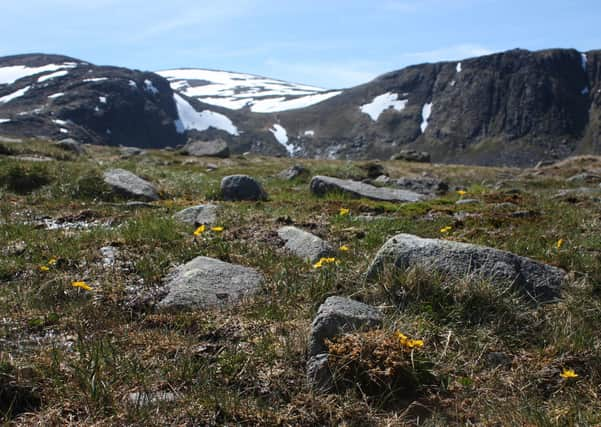Project to help save Cairngorms’ natural beauty


It is hoped people’s love of the Cairngorms can be harnessed to enlist volunteers to work alongside conservationists to protect plants and habitat and monitor the impact of climate change on species.
Experts warn the unique wildflowers of the UK’s largest national park, in pinewoods, grassland and mountain-top habitats, are threatened by habitat loss and climate change.
Advertisement
Hide AdAdvertisement
Hide AdThe scheme, led by Plantlife Scotland, supported by Scottish Natural Heritage (SNH) and the Cairngorms National Park Authority and funded by The National Lottery Heritage Fund, hopes to help reverse this trend.
It will focus on rare Caledonian pinewood species such as the one-flowered wintergreen and the twinflower, whose remaining isolated populations are on the verge of extinction because of habitat loss and unsuccessful interbreeding.
The species will be carefully moved by conservationists and volunteers to habitat that is more viable, Plantlife said.
There are plans to establish five new populations of twinflower and introduced one-flowered wintergreen to two new sites.
The project will also focus on arctic alpine vegetation, including hardy species such as cloudberry, reindeer lichen and bearberry, which shelter in snow-beds and have nowhere to go as climate change warms the UK.
Monitoring the species will help scientists understand the pressure on the habitat from climate change and pollution. And there will also be work to restore wildflower rich grasslands, upland hay meadows, and unimproved grasslands that are rich in rare waxcap fungi.
The plans include restoring five wildflower meadows and working alongside landowners to restore and protect waxcap grasslands.
Plantlife’s Gwenda Diack, the project manager, said: “We want people to reconnect with the rich wild plant heritage of this truly special part of Scotland, whether through the rekindling of wild plant folklore, celebrating current uses or taking action to help save rare plants.
Advertisement
Hide AdAdvertisement
Hide Ad“The Rare Plants and Wild Connections project will harness the power of citizen science and our love for the Cairngorms to restore and protect some of the rare plants and fungi of our pinewoods, meadows and mountains.” SNH’s plant adviser Iain Macdonald said: “The Cairngorms are home to some of our most rare and beautiful plants, and we know that people in the area care a great deal about these special species.
“We look forward to supporting this project to build on that connection and encourage more people to get hands on to help restore and protect these internationally important habitats.”
Comments
Want to join the conversation? Please or to comment on this article.